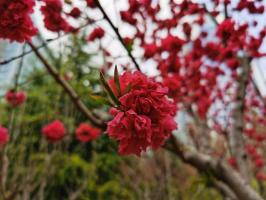What's Eating a Hole in Your Potted Basil Plant?
Are you noticing tiny holes in the leaves of your potted basil plant? If so, you're not alone. Many gardeners have struggled with pests munching on their beloved plants.
The Culprit: Pests
There are a few common pests that are known for chomping on basil plants. One of the most common is the flea beetle. These tiny insects are usually black or brown and jump when disturbed. They will leave small holes in the leaves of your basil plant and can cause a lot of damage over time.
Another pest that likes to feed on basil is the aphid. These small, pear-shaped insects can be green, brown, or black and will cluster on the stems and leaves of your plant. They pierce the leaves with their mouthparts to suck out the sap, which can cause the leaves to become distorted and stunted.
How to Identify the Pest
It's important to identify which pest is eating your basil plant so that you can choose the most effective treatment. To do this, closely examine the leaves and stems of your plant. Look for any signs of the pest, such as small black beetles, clusters of green or black aphids, or small webs on the plant.
Another helpful tool is a sticky trap. These can be placed near your plant to catch any insects that may be causing damage. By examining the insects caught on the trap, you can get a better idea of which pest you're dealing with.
Treatment Options
Once you've identified the pest, it's time to take action. Here are some treatment options:
Neem Oil:
Neem oil is a natural pesticide that is effective against a wide range of pests. It works by disrupting the pest's hormone system, making it difficult for them to feed, mate, and lay eggs. Simply dilute the neem oil in water and spray it on your basil plant.
Insecticidal Soap:
Insecticidal soap is a safe and effective way to control pests on your basil plant. It works by dissolving the outer coating of the insect, causing them to dehydrate and die. Simply spray the soap solution on your plant, making sure to coat the tops and bottoms of the leaves.
Beneficial Insects:
Introducing beneficial insects, such as ladybugs or lacewings, to your garden can help control pest populations naturally. These insects will prey on pests like aphids or flea beetles, reducing their numbers over time.
Prevention Tips
The best way to deal with pests is to prevent them from infesting your plants in the first place. Here are some tips:
Clean Up:
Remove any fallen leaves or debris from around your plant. This will help reduce hiding places for pests and their eggs.
Avoid Overcrowding:
Don't crowd your basil plants together. This can create a humid environment that is perfect for pests to thrive in.
Rotate Your Plants:
Rotate your basil plants with other crops from year to year. This can help prevent pests from building up in the soil.
Conclusion
Dealing with pests can be frustrating, but with the right tools and knowledge, you can keep your basil plant healthy and happy. Keep an eye out for signs of pest infestation, identify the pest, and choose the best treatment option. With a little prevention and diligence, you can enjoy a bountiful harvest of fresh basil all season long.

 how many times do yo...
how many times do yo... how many planted tre...
how many planted tre... how many pine trees ...
how many pine trees ... how many pecan trees...
how many pecan trees... how many plants comp...
how many plants comp... how many plants can ...
how many plants can ... how many plants and ...
how many plants and ... how many pepper plan...
how many pepper plan...






























